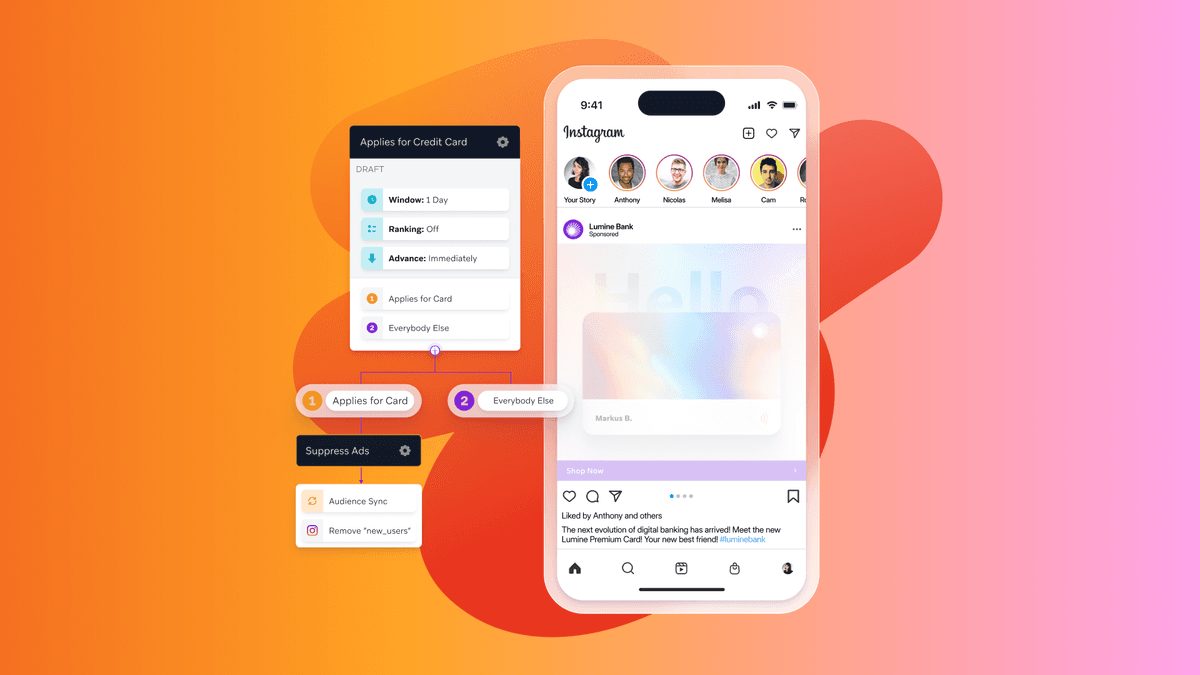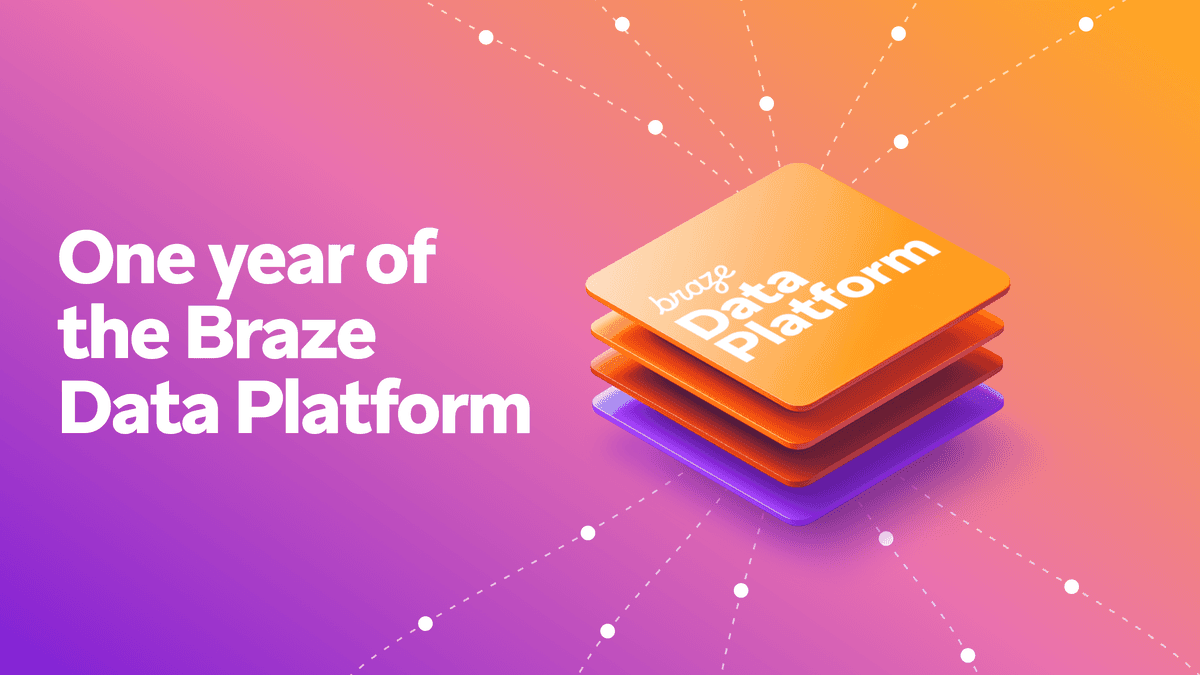How Starbucks, Kohl’s, and More Do Mobile Loyalty
Published on October 05, 2016/Last edited on October 05, 2016/6 min read


Team Braze
By the look of some people’s keychains, folks love their loyalty programs. That said, many of us have also gotten quite good at giving a polite “no thanks” to the store clerk’s ubiquitous “would you like to sign up?” offer. Most shoppers are now savvy enough to spot a rewards program that exists for the primary purpose of collecting and using our personal shopping information versus a program that actually saves us money, or offers us something legit in return.
For a loyalty program to be effective, customers have to benefit, tangibly, from the effort of signing up. That’s never been truer than now. Loyalty programs—even the simplest ones, like punch cards—are going mobile. There’s market saturation with mobile apps. We have access to more than we can possibly use. So, what’s the key to a successful mobile loyalty program?
To answer that question, we took a look at how a few well known companies get their mobile loyalty programs right. As we’ll see, these large brands adhered to some of the key tenets of customer engagement: employing authentic communication, putting the user experience first, understanding that one size does not fit every customer, and engaging customers in the right time and place.
Starbucks does mobile loyalty by listening and adjusting
Starbucks has a proprietary app that rewards loyal customers each time they shop, both with actual rewards, and also with a fully integrated and streamlined shopping experience. They’ve updated their rewards experience and app based on customer feedback. Take a look:
- How the loyalty program works: As customers shop, they earn two points for every dollar spent. Formerly, customers received a star for every visit, but Starbucks changed the system in response to customer requests.
- What customers get: Approximately every $60 or so (or, approximately every 12 visits), Starbucks customers receive a free item.
- How they take advantage of mobile: The Starbucks app makes it simple for customers to order their bevvie, snack, or merch before they get to the store, pay and tip online (through a connected Starbucks card), and refill their card through their mobile device. The app also has rewards built right in and takes advantage of in-app messaging to show customers when they’re getting closer to cashing in on their points.
Marketers take note: Starbucks listened to their customers. Shoppers were gaming the prior system by ringing up items individually to count “visits” per item, instead of actual visits. This slowed down lines, and made the customer’s experience…a bit silly. Customers asked to be rewarded for spending, instead of visiting, and Starbucks listened. By collecting data, and having a two-way communication with the masses, they’re working toward earning greater loyalty.

Belly & LevelUp enhance customer interactions among small businesses
Not every brand can have as robust and proprietary an app as Starbucks. For others, there are off-the-shelf solutions like Belly and LevelUp. These apps function similarly to each other, though LevelUp integrates payments into their app.
- How the loyalty programs work: Each business can define its own program, or run multiple programs at once to attract new customers, offer rebates for repeat shoppers, or reward a first purchase or a customer who’s spent a certain amount of money.
- What customers get: This depends on how the business defines its programs, but there are always tangible rewards associated with both Belly and LevelUp in the form of money back, discounts, or free stuff.
- How they take advantage of mobile: Both have built-in loyalty and incentive programs that can be defined and customized. Both integrate with social media and email, so users can share information about your business. Both collect data about customer behavior, and allow you to send targeted emails based on the data you gather.
Marketers take note: Small businesses like the Brooklyn Deli, Dog-a-holics, and Fromagination, have all found that Belly has improved their business by enhancing communication with clientele, and deepening interactions with customers. Similarly, LevelUp customers like Steak ’n Shake are able to offer customers a suite of services through their mobile loyalty, ordering, and payment services. So everyone wins. The customer experience is expedited, simplified, and made more personal, and the business gets to know their customers better.
Kohl’s department stores streamline in-store purchasing
This year, in their mega-omnichannel style, Kohl’s took a bold step toward bridging the physical and digital worlds in their departments stores. They integrated their private Kohl’s credit card with Apple pay, which also automatically pulls in the Kohl’s loyalty program, Yes2You.
- How the loyalty program works: Customers can link their Kohl’s credit card to Apple Pay, and hold their phones up to a kiosk at checkout rather than pay with cash or a physical credit card. As they spend, Yes2You points accrue in their account, and customers get money back to spend online or in store.
- What customers get: For starters, they get to leave their wallets home. For most of us, leaving home without a wallet is still unthinkable, but mobile is moving us closer and closer to a reality where the wallet could become as obsolete as the beeper. (I recently forgot my wallet on a trip to the UPS store, but was able to complete my errand anyway, because I have my cards stored in a password vault and digital wallet app on my phone.) Other things customers get: their experience is eased with a “single tap utility” at payment. They only need to connect Yes2You once, and don’t need to rely on a credit card or loyalty card to enjoy the benefits of the program into the future.
- How they take advantage of mobile: Before the loyalty program integration, Kohl’s introduced “store mode” in their mobile app, which allowed shoppers to search merchandise and deals digitally while shopping in a physical location, in real time. That approach yielded great results for them, so the payment and loyalty program integration was a logical next step in their commitment to an omnichannel and mobile approach.
Marketers take note: The greatest benefits are in the personalization potential, and in ease of use for the customer. Customers are able to pay and earn rewards in one simple motion. Whether customers find the tap to be preferable to the traditional swipe remains to be seen, but Kohl’s reported that they saw an uptick in digital orders after they put more energy into an omnichannel approach. It’s likely that this effort will follow suit. Combining purchase data with loyalty data gives Kohl’s deeper insights into customer behavior, and the customer gets a well-rounded experience of the brand from the moment they consider a visit to Kohl’s, to the moment they complete their transaction (and beyond).
Large or small, there’s an opportunity for your brand
Loyalty programs may take many forms (points, tiers, VIP benefits, discounts, rewards, gamification), but the end game for a company is deeper and continued engagement with customers. Customers win in whatever ways you define, and you win by smartly gathering data that allow you to glean insights into behaviors that can drive knowledge about your customer’s needs. As you seek to define your own loyalty program, the answers to what your customers might respond to could already be sitting in your data, like a more seamless in-store shopping experience, more ways to save, or a way to combine the online and in-store experiences.
Be Absolutely Engaging.™
Sign up for regular updates from Braze.
Related Content
View the Blog
What is triggered communication? How to automate smarter, timely campaigns

Team Braze

One year of the Braze Data Platform: Elevating user experiences and cross-team collaboration

Sahiz Kaur

Global and regional AI adoption: What it means for customer engagement
